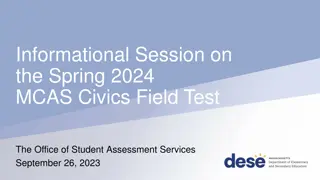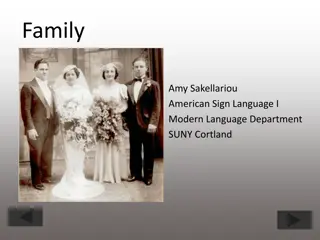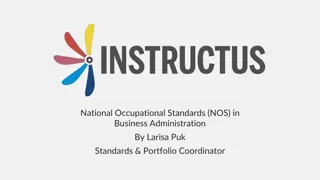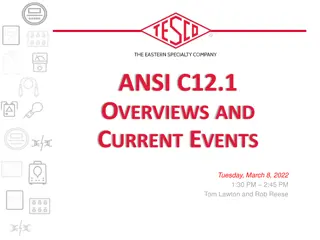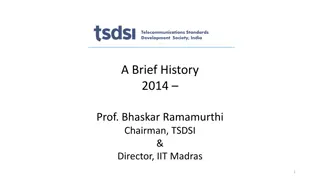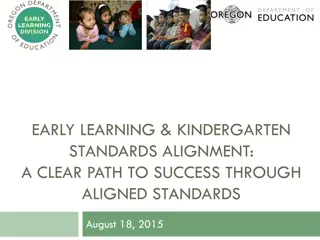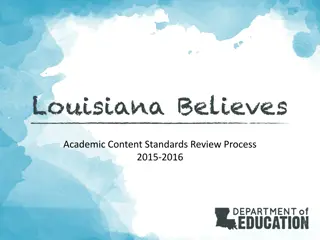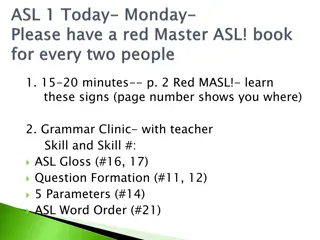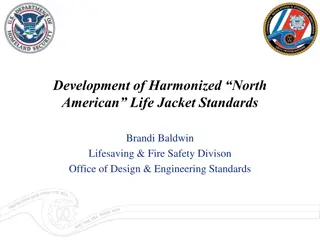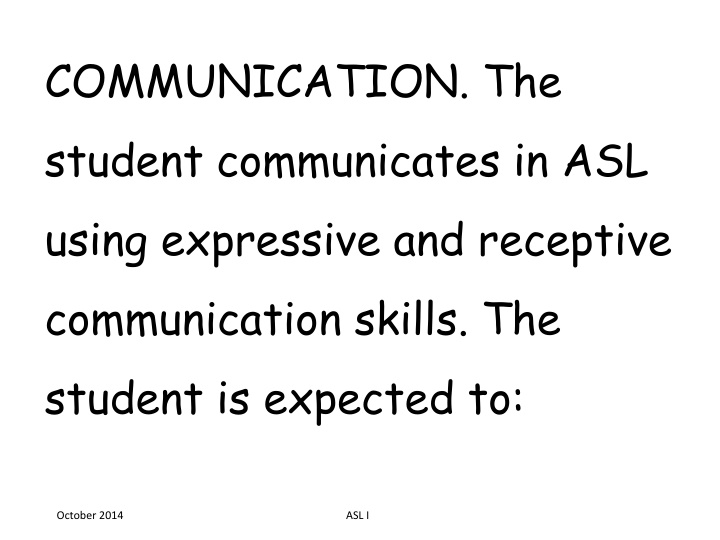
Developing ASL Communication, Cultural Understanding, and Subject Connections
Enhance ASL communication skills by engaging in signed exchanges, demonstrating understanding of signed language, presenting information, and being aware of ASL grammar. Explore and understand different cultures by studying their practices and products. Use ASL to connect with other subject areas and access information through resources.
Download Presentation

Please find below an Image/Link to download the presentation.
The content on the website is provided AS IS for your information and personal use only. It may not be sold, licensed, or shared on other websites without obtaining consent from the author. If you encounter any issues during the download, it is possible that the publisher has removed the file from their server.
You are allowed to download the files provided on this website for personal or commercial use, subject to the condition that they are used lawfully. All files are the property of their respective owners.
The content on the website is provided AS IS for your information and personal use only. It may not be sold, licensed, or shared on other websites without obtaining consent from the author.
E N D
Presentation Transcript
COMMUNICATION. The student communicates in ASL using expressive and receptive communication skills. The student is expected to: October 2014 ASL I
engage in a variety of signed exchanges of learned material to socialize and to provide and obtain information.[1A] October 2014 ASL I
demonstrate understanding of simple, clearly signed language such as simple stories, high- frequency commands, and brief instructions when dealing with familiar topics.[1B] October 2014 ASL I
present information using familiar words, phrases, and sentences to others.[1C] October 2014 ASL I
demonstrate an awareness of ASL grammar, vocabulary, and phonology / cherology.[1D] October 2014 ASL I
CULTURES. The student gains knowledge and understanding of other cultures. The student is expected to: October 2014 ASL I
demonstrate an understanding of the practices (what people do) and how they are related to the perspectives (how people perceive things) of the cultures studied.[2A] October 2014 ASL I
demonstrate an understanding of the products (what people create) and how they are related to the perspectives (how people perceive things) of the cultures studied.[2B] October 2014 ASL I
CONNECTIONS. The student uses the language to make connections with other subject areas and to acquire information. The student is expected to: October 2014 ASL I
use resources (that may include technology) in the language and cultures being studied to gain access to information.[3A] October 2014 ASL I
use the language to obtain, reinforce, or expand knowledge of other subject areas.[3B] October 2014 ASL I
COMPARISONS. The student develops insight into the nature of language and culture by comparing the student's own language and culture to another. The student is expected to: October 2014 ASL I
demonstrate an understanding of the nature of language through comparisons of the student's own language and ASL.[4A] October 2014 ASL I
demonstrate an understanding of the concept of culture through comparisons of the student's own culture and the American Deaf culture.[4B] October 2014 ASL I
demonstrate an understanding of the influence of one language and culture on another.[4C] October 2014 ASL I
COMMUNITIES. The student participates in communities at home and around the world by using languages other than English. The student is expected to: October 2014 ASL I
use the language both within and beyond the school setting through activities such as participating in cultural events and using technology to communicate.[5A] October 2014 ASL I
show evidence of becoming a lifelong learner by using the language for personal enrichment and career development.[5B] October 2014 ASL I





